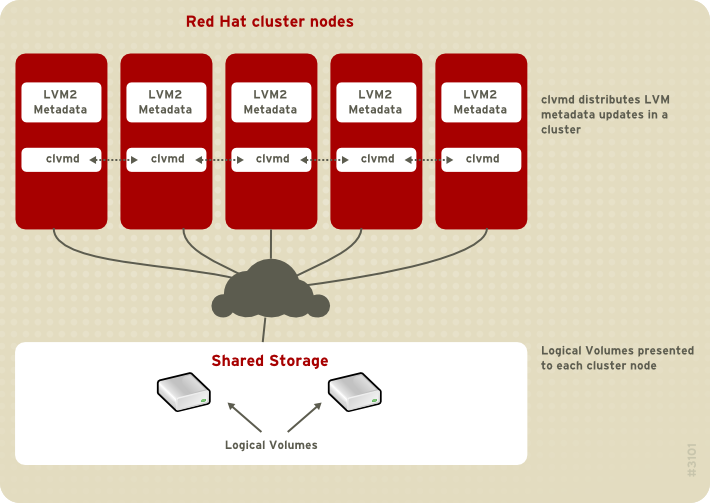The Clustered Logical Volume Manager (CLVM) is a set of clustering extensions to LVM. These extensions allow a cluster of computers to manage shared storage (for example, on a SAN) using LVM.
The clmvd daemon is the key clustering extension to LVM. The clvmd daemon runs in each cluster computer and distributes LVM metadata updates in a cluster, presenting each cluster computer with the same view of the logical volumes.
Figure 1.2, “CLVM Overview” shows a CLVM overview in a Red Hat cluster.
Logical volumes created with CLVM on shared storage are visible to all computers that have access to the shared storage.
CLVM allows a user to configure logical volumes on shared storage by locking access to physical storage while a logical volume is being configured. CLVM uses the locking services provided by the high availability symmetric infrastructure.
Note
CLVM requires changes to the lvm.conf file for cluster-wide locking. For information on configuring the lvm.conf file to support CLVM, see Section 3.1, “Creating LVM Volumes in a Cluster”.
You configure LVM volumes for use in a cluster with the standard set of LVM commands or the LVM graphical user interface, as described in Chapter 4, LVM Administration with CLI Commands and Chapter 7, LVM Administration with the LVM GUI.
For information on installing LVM in a Red Hat Cluster, see Configuring and Managing a Red Hat Cluster.
